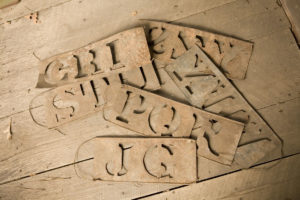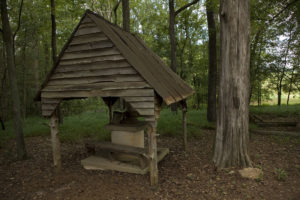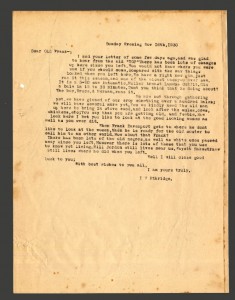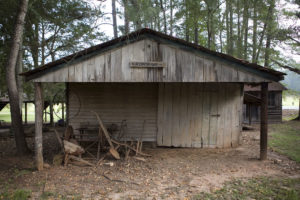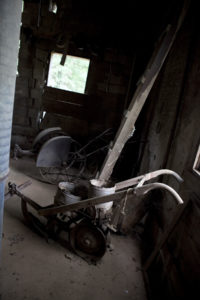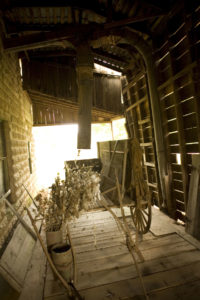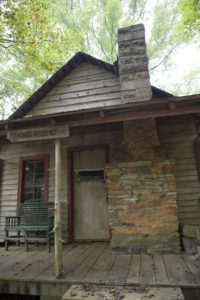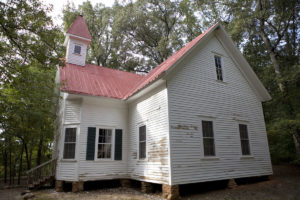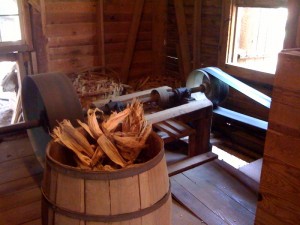The Shields-Ethridge Heritage Farm hosts many special events and educational opportunities, including a number of curriculum-based tour and hands-on educational programs for grades K – 12.
Teacher Resources
The Shields-Ethridge Heritage Farm is an historic site, reminding us of farmers who depended on local production and lived in a self-sufficient way. A visit to the Shields-Ethridge Heritage Farm offers third grade students demonstrations of living, learning, and working over a 200 year history. Suggestions for preparing students for observing, recording, and discussing their…
Georgia Performance Standards
The Shields-Ethridge Heritage Farm provides a unique opportunity for students to gain economic and agricultural understanding, practice independent reading, interpret and clarify information, increase vocabulary, and to listen and communicate orally. Written products of Farm visits demonstrate students’ ability to express and understand ideas. Specific standards that can be applied at the Farm are identified…
Family Timeline
When you step out of the bus at the Shields-Ethridge Heritage Farm, you step back in time. The landscape you see is a puzzle. Because the history of the Shields-Ethridge Farm spans so many years and so many agricultural changes, a timeline will help make sense of what you see here. After you have read…
Grist Mill
When Joseph Shields bought this land in 1802, his first job was to clear the land and plant crops. He used a crosscut saw to fell trees and an axe to cut wood for fuel. Even before building a home, Joseph Shields had to plant his first crop, so that his family could eat. Once…
Blacksmith Shop
A visit to the blacksmith’s shop at the Shields-Ethridge Heritage Farm is like visiting the hardware store 100 years ago. Around the shop you’ll see an oxen yoke, wagon wheels, barrel hoops, and an assortment of plows. Everything was “made from scratch” at the Farm, and the blacksmith was very important to everyone who lived…
Plowing
Every crop grown at the Shields-Ethridge Heritage Farm depended upon the soil. The plow was a very important tool for the farmer. It broke the soil and was pulled by mules, before the tractor was invented. The first plows were wooden, but about the time Joseph Shields began to farm here, cast-iron plows were used.…
Cotton Crop
Let us introduce you to a cotton boll. Boll, that is, not ball. The fluffy, white stuff inside the boll, or hull, is used to make the jeans you wear. If you look at the white stuff with a hand lens, you will see short, silky fibers. You can’t see the sticky seeds inside the…
Teacher’s Residence
Sharecroppers, or tenant farmers, helped farm the Shields-Ethridge property. Their homes were near main roads near the farm. By 1940 about 13 sharecropper families worked between 15 and 30 acres of the farm, in exchange for housing, equipment and supplies. Today, only two of the tenant houses are still standing. You will visit one, called…
Bachelor’s Academy
After visiting the Bachelors’ Academy, read the description below, written in 1915 by the Superintendent of the Jackson County Schools. BACHELOR’S. 28. Teacher: Miss Omie Dunagan. Location: Two and one-half miles northeast to Arcade; 3 miles northwest to Potters. Grounds: Area. 2 acres: titles in county board; unimproved grove; grounds neglected; no school garden; no…
Fieldtrips
In addition to our regular house tours, Shields-Ethridge Heritage Farm offers a curriculum-based tour and hands-on educational programs for grades K – 12. School Groups Area school children are also regular visitors to the Farm and represent the largest visitation group. All ages of school children visit the Farm for tours and activities intended to…

